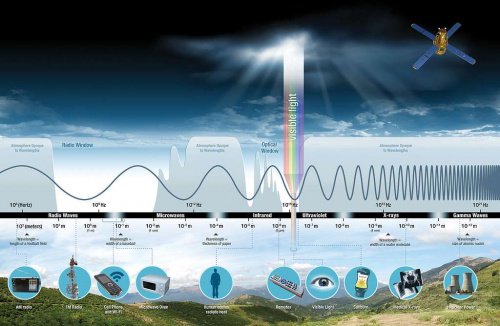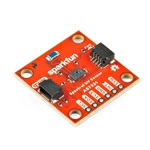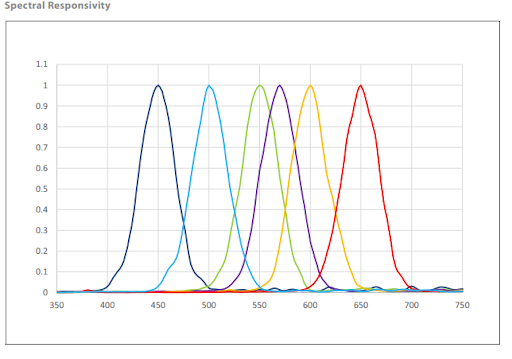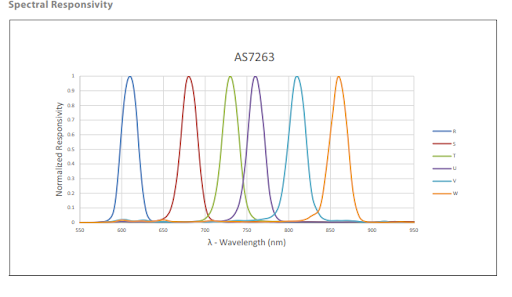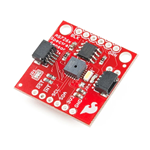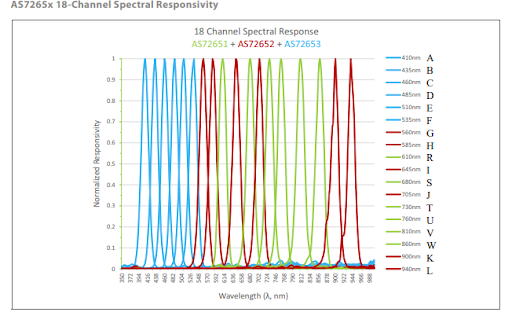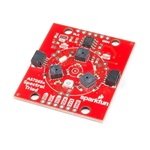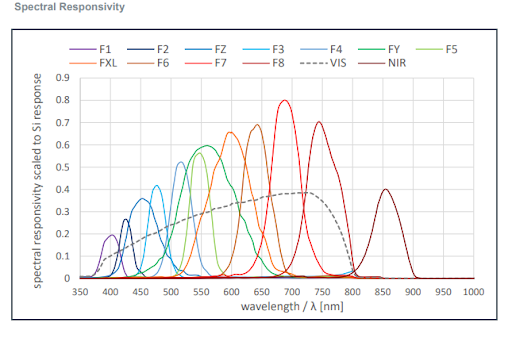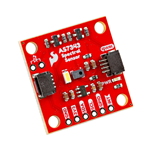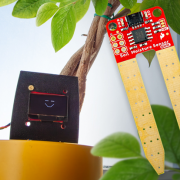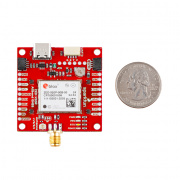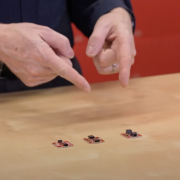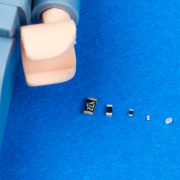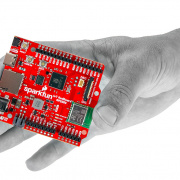What SparkFun's Spectral Sensors Can Detect
Let's take a deep dive and compare each SparkFun Spectral Sensor to each other!
Have you ever wondered what more there is to see beyond the colors of the rainbow? Our world is awash in light, much of which remains invisible to the human eye. But what if you could peek into these hidden realms of light? In this blog post, we'll dive into the fascinating capabilities of SparkFun's spectral sensors and explore how these devices allow us to detect, analyze, and understand the subtle nuances of light across both visible and non-visible spectrums, unlocking a new dimension of perception for your projects.
The Electromagnetic Spectrum: Visible and Non-Visible Light
Before we take a look at the capabilities of our sensors, let's very briefly explain the electromagnetic spectrum. Light, at its core, is a form of electromagnetic radiation, a vast spectrum of energy that travels in waves. The visible light spectrum is the tiny sliver of this spectrum that our eyes are equipped to perceive. It ranges from approximately 380 to 780 nanometers (nm), but this number can vary. This is what allows us to see the familiar colors of the rainbow: red, orange, yellow, green, blue, indigo, and violet (we aren't brave enough to get into the legitimacy of the color purple). Beyond this narrow band lies the non-visible light spectrum, encompassing a much broader range of wavelengths and frequencies. This includes, but is not limited to, ultraviolet (UV) light which are shorter wavelengths than violet, and is responsible for sunburns; infrared (IR) light which are longer wavelengths than red that we perceive as heat; and even further out, radio waves, microwaves, X-rays, and gamma rays. Each of these regions of the electromagnetic spectrum carries unique information and interacts with matter in distinct ways, offering a wealth of data for specialized sensors to detect.
Now with that out of the way, let's see what our sensors are capable of! (All responsivity graphs are available on each respective datasheet)
Spectral Sensor Comparison Overview
SparkFun Spectral UV Sensor - AS7331 (Qwiic)
This SparkFun Qwiic Spectral UV Sensor features the AS7331 UV sensor from ams OSRAM©. It measures UV radiation on three channels: UVA (320-400nm), UVB (280-320nm), and UVC (200-280nm) with high sensitivity and accuracy. The three channels on the AS7331 each have individual photodiodes with built-in interference filters. The sensor has four operating modes with an automatic power-down sequence between measurements for low current consumption in all three modes.
SparkFun Spectral Sensor Breakout - AS7262 Visible (Qwiic)
The SparkFun AS7262 Visible Spectral Sensor Breakout brings spectroscopy to the palm of your hand, making it easier than ever to measure and characterize how different materials absorb and reflect different wavelengths of light. The AS7262 spectrometer detects wavelengths in the visible range at 450, 500, 550, 570, 600 and 650nm of light each with 40nm of full-width half-max detection.
SparkFun Spectral Sensor Breakout - AS7263 NIR (Qwiic)
The SparkFun AS7263 Near Infrared (NIR) Spectral Sensor Breakout brings spectroscopy to the palm of your hand, making it easier than ever to measure and characterize how different materials absorb and reflect different wavelengths of light. The AS7263 spectrometer detects wavelengths in the visible range at 610, 680, 730, 760, 810 and 860nm of light, each with 20nm of full-width half-max detection.
SparkFun Triad Spectroscopy Sensor - AS7265x (Qwiic)
The SparkFun Triad Spectroscopy Sensor is a powerful optical inspection sensor also known as a spectrophotometer. Three spectral sensors are combined alongside a visible, UV, and IR LEDs for light spectroscopy. The Triad is made up of three sensors; the AS72651, the AS72652, and the AS72653 and can detect the light from 410nm (UV) to 940nm (IR).
SparkFun Spectral Sensor - AS7343 (Qwiic)
The SparkFun AS7343 Qwiic Spectral Sensor enables users to measure light in both the visible spectrum (VIS) and near-infrared (NIR) ranges, all on a single IC in a compact package. The AS7343 exhibits exceptional sensitivity across its sensing spectrum (~380nm to 1000nm) and operates reliably in low-light environments, including when measuring through tinted glass.
From detecting subtle changes in plant health with the AS7343 to exploring the hidden world of UV light with the AS7331, and even performing desktop spectroscopy across a broad spectrum with the Triad Spectroscopy Sensor, SparkFun's spectral boards open up plenty of new and unique possibilities. These easy-to-use, Qwiic-compatible devices empower users to develop applications for a wide range of purposes, from environmental monitoring and color analysis to material identification and beyond. With strong software support, including comprehensive Arduino libraries and Python packages, along with our detailed hookup guides, you'll have everything you need to get started. Hopefully, this overview provided a bit more insight into the differences between each sensor!
